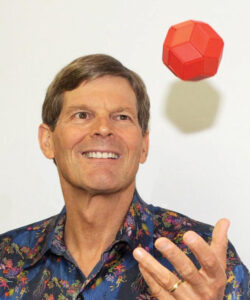 Joining us this episode is renowned creativity consultant and author Roger von Oech, to discuss the latest edition of his book “A Whack on the Side of the Head“. The book, now in its 5th edition, has sold over a million copies and has been translated into more than 20 languages.
Joining us this episode is renowned creativity consultant and author Roger von Oech, to discuss the latest edition of his book “A Whack on the Side of the Head“. The book, now in its 5th edition, has sold over a million copies and has been translated into more than 20 languages.
From Self-Publishing to Global Impact
Roger von Oech’s journey began in the early 1980s when he self-published the first edition of his book. Despite initial rejections from publishers, his perseverance paid off. He sold the first 2,000 copies in just a week, which eventually caught the attention of Warner Books. This marked the beginning of a global phenomenon that has inspired countless individuals and organizations to embrace creativity.
Key Insights on Creativity
During the interview, von Oech shared several insights on fostering creativity:
1. Don’t Fall in Love with Ideas: One of von Oech’s crucial tips is not to get too attached to any single idea. He emphasized the importance of being open to new ideas and willing to discard old ones that no longer serve their purpose.
2. Look for the Second Right Answer: Often, people stop at the first solution they find. Von Oech encourages looking for multiple right answers to discover more innovative and effective solutions.
3. Use Humor to Spark Creativity: Humor can be a powerful tool to break free from conventional thinking. By making fun of a problem or an organization, individuals can unlock new perspectives and creative solutions.
Creativity in Business
Von Oech has worked with numerous high-profile clients, including Apple, IBM, Procter & Gamble, and NASA. He often conducts workshops that emphasize doing over listening, helping participants engage in exercises that stimulate creative thinking.
Embracing AI in Creativity
The discussion also touched on the role of AI in creativity. Von Oech acknowledged the potential of AI to generate numerous solutions and accelerate problem-solving processes. However, he stressed the enduring value of human creativity and the importance of learning to think independently.
Final Thoughts
Roger von Oech’s insights remind us that creativity is not just about coming up with new ideas but also about letting go of old ones, looking beyond the obvious, and having fun with the process. Whether you are an individual looking to boost your creative thinking or a business aiming to foster innovation, von Oech’s wisdom provides valuable guidance.
For more on Roger von Oech’s work and to explore his creative tools, visit his website and check out the latest edition of “A Whack on the Side of the Head“.
You may also refer to the transcripts below for the full transciption (not edited) of the interview.
Greg Voisen
Well, welcome back to Inside Personal Growth. This is Greg Voisen, the host of Inside Personal Growth. And we have joining us from, actually you are living the same place that Guy Kawasaki is. Woodside?
Roger von Oech
Yeah, a lot of people not a lot, but maybe 5000 other people. Yeah, it's a town near Palo Alto, California, in the Bay Area.
Greg Voisen
Yeah, pleasure. And we're going to be speaking about this, this new version, this is revised and updated. What version is I mean, how many times have you revised this?
Roger von Oech
Well, that's what you have in your hand is the glorious Final Edition. It came out about six weeks ago. And it's the 5th edition. And so and to all the editions, it's sold over a million copies has been translated into over 20 languages. But it's kind of fascinating history to it. I remember, in the early 80s, I had Apple co founder Steve Jobs. That's a speaker at one of the conferences I produced. And I said, you know, what motivated you to start apple and he said, we make what we want for ourselves. And back in the mid 70s, I wanted to a personal computer, but there wasn't one around that satisfied me. So I put myself in the position of CO founding apple. And well, the rest is history. And similarly, in the early 80s, I had been in business for myself about five...
Greg Voisen
Somebody get that straight. Were you actually a co founder of apple at that?
Roger von Oech
No, no, no. He was a speaker at Oh, it produced an innovation and industry conference, I produced seven of those in the early 80s. He spoke at the first one. But at at one of our meetings before then, you know, I asked him that. And he said, we make what we want for ourselves. And so at that point, I had been in business for about five years as a creativity consultants, consultant, working with companies to stimulate creativity in various departments, r&d marketing. And I developed a lot of creativity ideas. And I thought, I'd love to have a creativity book. That was fun. That was interesting. There was interactive, that jumped out at people it was full of pictures and exercises, and examples. And I couldn't really find one around. And so as jobs that said, you know, we make what we want for ourselves, I created the first edition of a wax on the side of the head. And I did that in 1982. So we're going back 42 years. And I sent it off to publishers in New York. And I got rejection notices from all of them online that I sent it to. So I said, Look, I can do this as an illustrator I worked with, I've got a good distribution network. I'm tied into Silicon Valley. So I self published a wax on the side of the head in November of 82. And I did a first printing of 2000 copies, and those sold out in a week. And then I printed 5000 More, and then 25,000 More, and by March, I'd sold a lot of copies. And so that got the interest of publishers in New York. So I went to New York in the spring of 83 and met with Bill Schenker at Warner books. And Peter Austin's history. Yeah. And so they did that they bought it. Warner books did and as they said, they did a first printing of 100,000 copies. And as I said, it's sold a lot since then. So but through the years, they allowed me to change it and update it and revise it.
Greg Voisen
Well, I want to tell my listeners you are certainly have the ability to help people innovate. And you've done it for many different companies. I think you've said you were at IDEO as well. And I want to show my listeners some of the little toys you've created to help people kind of get in a creative spirit in a creative toy so you can get this book obviously at Amazon. You can go to Roger's website as well, which we'll put a link to as well. The book is like I said this is a revised edition and there's a creative wack pack that he calls it and ball of wax as well. Tell us if you would, because I think the listeners would be really interested, this book is well documented. You've got a great biography in it. You've got great stories, you got opportunities for people to get unstuck. What are some of the things you've found over the years through being at IDEO, and, and being close to Apple and all this stuff? It's Silicon Valley that helps people get unstuck and become more creative.
Roger von Oech
Let me just correct one thing I know a number of or I used to know a number of people at IDEO, but they've never been a client but I've worked with many other companies from Apple, IBM, Procter and Gamble, NASA, the Federal Reserve Bank, and on and on. I guess, if I were to give a couple of my favorite ways to get into a creative frame of mind. One is don't fall in love with ideas. Don't fall in love with ideas. And that's really, really important thing. People that tend to have an idea, fall in love with it, and then use it everywhere, even in places where it's not appropriate. And I'll tell you a quick background story. When I first started in business for myself, you know, 40 plus years ago, I went to a variety of people said, what's it going to take to be successful in business and I went, coaches, ministers, business people, and the best advice I got came from my printer. And what he said was, don't fall in love with type styles. And he said, I've seen it happen with a number of designers where they fall in love with a particular typeface. And then they want to use it everywhere, even where it's inappropriate. Well, I didn't listen to him. But pretty soon I fell in love with Palatino, semi bold in after a while my design was hackneyed, a lack freshness. So I was able to generalize that idea to don't fall in love with ideas in general. And I found that whenever I've been writing, especially in a book, whenever I've been blocked in, in a chapter or in a story, it's because I've been in love with a particular example, or a particular phrase. And as soon as I allowed myself to get rid of that, you know, beloved idea, things started to flow. And I think Mark Twain hit the nail on the head when he said, probably life's most most over valued pleasure is sexual intercourse. And one of life's least appreciated pleasures is dedication. I mean, there's something about letting go that allows new things to happen. So I think that's important. But but it's hard to do. It's, it's, it's, it's hard to let go of your favorite ideas. This ties into another really important point. And that is, there are two sides of the creative process. There's a construct of side and a destructive side. The construct a side is fairly easy. You come up with new ideas, new strategies, new approaches, new ways of doing business. You know, we do that all the time. The hard part is letting go of what worked for you last year, last month, what
Greg Voisen
you're using now, what you're using now. Yeah. And
Roger von Oech
so and it's hard for me as well. I mean, I have my own beloved ideas, and, but it's good to examine those so that that would be one thing I would pass along to your, you know, your your many what 10,000 100,000 You know,
Greg Voisen
listening audience, whoever's listening, whoever's listening today, you never know what the what the number is gonna be. And it's not today, it's when this actually airs. Now, you listed 10, mental locks that hinder creativity. And look, I've been here, I've been stuck many times before Roger, on, you know, trying to rethink something. And, as you said, Don't get in love with an idea. Because, hey, if everybody was buying ideas, and they bought your idea, everyone would be a millionaire. The reality is, you got to implement it, you got to go through the process of the whole creative cycle. Which of these you find out of this 10 mental walks? is what most people struggle with the most, and what advice would you have for kind of overcoming it?
Roger von Oech
Well, some of the mental blocks I, I would say, you know, first of all, we don't need to be creative for most of what we do. I mean, if you got up this morning and started contemplating the bristles on your toothbrush or questioning those, you wouldn't make it to work, you know, you wouldn't get anything done. So you don't need to be creative for 95% of what you do. You know, a second thing that gets in the way of people being more creative is that we become prisoners of familiarity with prisoners of familiarity. And that means, the more often you do something the same way again and again and again, the more difficult it becomes to think about doing it any other way you get into these routine thoughts. And the third is, is that we really have been taught to be creative as you grow up. And I think most of us have grown up with certain attitudes and beliefs that make sense for a lot of what we do but get in the way. And these mental blocks, which is really what the book is about, include things such as there's one right answer, don't be foolish to err is wrong. That's not my area. I think. I think, for me, personally, the creative strategy I use to get out of art to get myself in a creative frame of mind, in addition to not falling in love with ideas is look for the second right answer. Some people get stuck that there's always one right answer, and you just read math problems that interface and in fact the case, but I think it's important to look for the second right answer for the third right answer. For example, here's a pin, you know, what is this? It's a writing device. That's the first right answer. What's the second right answer? It's a hole punch. It's an air cleaner. It's a weapon. If you if somebody is choking, it could be an emergency tracheotomy device. And if you have that attitude on it, looking at the world, or looking at your own problems. You see, this is why I sold that last week or last month. But what's the second right way of doing it? What's the third right way? An easy way to enforce this kind of thinking, or this approach, in your thinking is to change the way you ask questions. A lot of people you may have a boss or friend or spouse who will say, you know, what's the result of this? Or what's the answer? Or what's the point? So you're looking for one answer one point or one result. But if you can train yourself to look for our ask questions to solicit plural answers, like what are the answers to this? You've given me one, give me two more? Give me five? You know, give me six. And when you ask people to go beyond the first right answer, you know, the, they'll typically like give you the stock answer or the stock approach. But if you get to the third and fourth and fifth right answer, then you can get yourself in a place where you can be creative. And you know, maybe a lot of the work, there aren't practical, you know, that's another value. And you've got to be practical. But when you're generating ideas, it's important to look at five and six, and maybe 10, if you can, and that's where creativity really starts to open up. So you asked initially, you know, what are some tips for you know, the listeners here, I would say, again, don't fall in love with ideas. And another one is, you know, look for the second right answer. The 19th 20th century French philosopher Emile Shaikh of Shakti Arian, Simone, someone said, Nothing is more dangerous than an idea, when it's the only one you have, you know, because if you have a problem, you're gonna go right to that that may have solved your that may have solved the problem two years ago, or five years ago, or last week, but maybe conditions have changed. And so it's important to keep looking for additional right answers. You don't always do that. Roger.
Greg Voisen
And I also think in the world in which we live today with AI, and computers. Now, obviously, AI is relatively new to most people, but the ability to have it help you formulate, let's just call them ideas. I mean, look at it, you're looking at a vast array of knowledge that exists inside this machine that our minds just don't experience or have. Well, how do you think AI is going to affect or positively effect? I should say, I think it already has. We're seeing it in medicine. We're seeing it in all kinds of areas where it's actually accelerating processes for us to do. I don't want to exclude the fact that as human beings, we are part of the process. Do you can you outline for me? What do you think the good part will be? And possibly what the downside might be? Well, you've
Roger von Oech
already outlined a couple of the ones like, I have a neighbor who is involved in in medical fields and doing research and he's talking about how he's using AI to think of going beyond the first and 10 and even 20 right answers on a particular approach, you know, looking at some DNA solutions, you know, finding you know, hundreds of 1000s of answers and then sorting them out. So I certainly see that medicine. I think I'm with the vast majority of people who have just been awestruck by how quickly the AI explosion is hit us in the last year and a half, and it seems to be accelerating. And I see a lot of possible positive uses for it. I mean, I can remember 50 years ago, I worked for IBM and it was a great company then and they were, you know, they were getting resistance, we were getting resistance from companies like, we don't want to be taken over by computers and, and we were we, we learned to sell to them saying that it will solve a lot of your problems, financial inventory, invoicing, payroll, and on and on. And then since then, you know, the last, you know, 50 years computers didn't have many things. So I, I don't have any slick answers for you on where what IBM is going to do, I think a lot of it's hyped, but I think there's going to be a lot of good applications. Me personally, I, one thing I feel good about with this recent addition of a whack on the side of the head, and that is, I guess, there we go, is that no AI went into creating a ton, neither the illustrations nor the writing of it. And I think that in a you've got a program or a set of programs, you know, giving you prompts and giving you outlines how to do things, how to deal with telephone solicitors or deal with the IRS or how to file a complaint with the United Airlines, that can be a good thing. But I think there's still going to be a value for people who can write cogent paragraphs and pages of English and to express their ideas and learn how to do their own thinking. There's nothing quite like writing to find out, you know, what your own ideas are. And it's,
Greg Voisen
I think there's also this element of the way our brain works, you know, we've got a subconscious, especially when you're writing a goal or a vision or something for yourself, the connection between the subconscious and the hand on paper is huge. It's really a big element that people need to take a look at, hang on a second. And when I would say is that, you know, that is there, there is nothing like our own human brains, but to have it be augmented with AI is really good opportunity. Now, one of the things I know you've done is, you've said, Hey, used to put on these events used to travel the world, you spoke to all kinds of groups, you were everywhere. And as a result of that you got some pretty high profile clients. What did you do? Or could you advise people listening today, that were some of the common challenges that those companies face in fostering creativity that many of our listeners right now could be facing? And what did you do to help these companies navigate these challenges that they were experiencing?
Roger von Oech
Okay, well, that's, that's, that's a huge question. I'm often I was brought in, say a company might have a six month project that they were working on or a year long project or a reengineering project. And I'd often be brought in to deal with a group at the very beginning of that, to open up people's thinking so that they wouldn't immediately go to past solutions on how to solve you know how to manage a project more effectively, or how to develop, you know, this product. So, typically, I would be brought in early on to open up people's thinking, and I would share my creativity ideas, we'd often do work in a workshop fashion. And the way I would do my workshops is, I think you improve your ability to be creative, not by being lectured at, you do it by doing it. And so I would do a lot of exercises, both individual and group exercises, some dealing with problems way out in the blue, and some very focused in on, you know, what the content companies issues were, and as the day or half day or two days will go on and become more and more focused. If I could share a couple of things here. on that. You mentioned you wanted several tips. And I've mentioned so far, look for the second right answer, and don't fall in love with ideas. One of my favorite ways to get into a creative frame of mind is humor, I found that if you can make fun of a problem, make fun of an organization, make fun of your clients, whatever. It frees your thinking from a lot of deeply embedded assumptions. And I've seen this happen again. And again, we're early on with a client, I'd have them make offbeat and irreverent mottos for their company or for their products or companies as a way of freeing up their thinking. And I'll share just a couple of those with you that because I mean, I mean, I think it's important to you know, go ahead and be wacky you know, get into a crazy frame of mind and ask what's funny about what you're doing and again, a lot of people especially business people can get really serious like you know, we got a lot of money on the line here. We don't want to lose our customers we got competition. But if early on in the creative process, you can use a little humor really does it for example on I'll mention And a few of the companies that where I've done this and some of my favorite models have done a few things with Disney over the years, and they're offbeat and irreverent motto for Disney was the Walt Disney Company, the place where When you wish upon a star, we charge you for it. And
Greg Voisen
that's, yeah, that's certainly true.
Roger von Oech
or Microsoft, we're arrogant. And we should be. or Bank of America worked with well did a lot of work with a Bank of America over the years. And they're offbeat irreverent motto was, where you're not alone until you want a loan. The IRS has been a client. And their motto was, this is again created by their own people, the IRS service is part of our name. Just remember, it's the last part.
Greg Voisen
You know, it's you're getting people to be playful. And I think creativity comes from play. And I had this, you've heard this statistic and saw my listeners, so many times, between the ages of one and five, our levels of creativity, and maybe I was reading it in your book. They're like off the wall. But then we get programmed through the systems. And we lose our ability to create so much more. I don't know, you probably know the exact statistics and numbers. But I will tell you, it is phenomenal. The level of deprogramming that goes on after the age of five, to actually be creative. Do you want to kind of address that, because that's really the problem we're addressing is while we got stuck in a system?
Roger von Oech
Well, you know, again, we don't need to be creative for most of what we do. And you do, do need to learn how to do math and read and have a lot of practical skills. But I remember when I was a sophomore in high school, and my English teacher put a chalk up on the blackboard, you know, about the size of a penny. And as you know, the class of I guess we were all 16 years old. What that was, and we said it's a chalk on the blackboard and nobody said anything else. And then about a minute later, she followed that with the comment. Well, that's interesting. Yesterday, I did that same exercise with a group of kindergarteners. And they thought of 50 different things. It could be an animal's eye, it could be the top of a telephone pole, it could be a squash bug, it could be all these things. So between the ages of six and 16, we learned how to get the right answer, we'd learn how to be logical and practical. But we'd also lost a fair amount of our imaginative power. And the thing that I've noticed about creative people is that I can't say this, but all creative people have been a lot of them have good senses of humor, and they're playful, and they allow themselves to fool around with ideas and manipulate them. And, you know, as I was doing, as I, you know, would do in my seminars. I'll share just a few others at NASA. I've done probably five or six things with NASA over the years they're off BT motto was NASA we get it up? What are a few others? Yeah, Kimberly Clark, which is the paper products company, and theirs was we've got a product where a hole in your body. Computer, if you want to support you should have bought jockey anyway. If you can be irreverent with your own most hallowed ideas and basic beliefs, you know, it's it, it opens your mind up. And if I can continue answering this question for you in a little broader way, what I would do with companies and what I also recommend, I mean, a whack on the side of that gets into that. But over the last, I don't know, nearly half century, I've had a chance to work with a lot of creative people and individuals in a variety of industries and disciplines. And I've noticed a common pattern and how creative people would be able to generate and manage and apply new ideas. The hallmark of creative people is their mental flexibility, they're able to move in and out of different types of thinking depending on the needs of the situation at hand. And so sometimes they'd be open to probing and curious and looking all around. And sometimes they'd be off the wall and playful and you know, irreverent. But when it came time, they were able to be serious and discerning and faultfinding. And then finally, when it was necessary to implement an idea, they would be aggressive and persistent and trying to reach their objective. And so at least four different ways of thinking I gave the names of creative people were able to be an explorer, an artist, a judge, and a warrior. You know, again, explore artists judge and warrior. And so, a lot of what I would do in my seminars is to rekindle with artists of balance. And also this happens in the book, or the books and the various products that are created, you know, to tap into your explore again and be curious to look in place, you haven't looked a long time and you know, you even haven't even considered overlooking and do expect unexpected things. And as the artist to, you know, be off the wall are crazy and be foolish and humorous, and, you know, look for a lot of right answers. And as the judge, you know, to be serious and critical, but also build up off of, you know, some of the odd ideas, and then finally, to be the warrior, and that is, you know, get your idea to action. And I would develop these skills with people have them recognize their own creative ability, or their creative style. And it's important. Some people do,
Greg Voisen
would you call those Rogers kind of the archetypes of people for in that area? Or are these just whatever you call labels that you put on why you
Roger von Oech
call them create a market types, I mean, I've written, I wrote a whole book about that my second book was called a kick in the seat of the pants using your explore artists judging warrior, you know, to be more creative. And the latest edition of wack in the side of the head has, you know, a lot of that material in the back of using the four rules. And, you know, the thing I would tell people is that some people get stuck in one or two roles all the time, especially at work you get stuck is the judge, and someone brings an odd idea to you and say that stinks, it sucks, or suck in a work as opposed to saying, Well, hey, what if we applied a creative node or that what if we try to look for something you know, a little better on that or say, that's an interesting idea, but maybe it's an idea that would have worked better three years ago, and then you know, life was moved on. Or a lot of people, especially salespeople can get into this world, they're always in Warrior mood, you know, like, I gotta get out and do the sale, and that's what they're getting paid to do. But if you can open up their explorers, and their artists, you know, to, you know, consider some alternative closing approaches or ways to find customers, that that would be to their benefit as well. So,
Greg Voisen
well, I, I think that as somebody who's as creative as you've been, and help others be coming creative, I'm sure my listeners would love to hear a couple stories about businesses that you work with, where maybe some irrelevant or odd idea turned out to be some groundbreaking solution. Because, you know, what I find is, what's relatable for me is when an author or a thought leader tells a story of what happened, it actually clicked something in my brain, it's like, there's something that fires because stories are so compelling. So I'd love for you to tell a story or two, about, you know, clients, you work for things that happen, and really an example of how it just became a total breakthrough.
Roger von Oech
Well, I guess one example, a few years ago, working with a pretty large semiconductor company, and it was a group working on a project and they had an eight-month timeline, and you had the engineers there, but also the marketing people. And at the beginning of the project, everybody had their agendas, how they were going to go about doing it, and were able to break down the various issues and eventually got some marketing and engineering, you know, the marketing representing what the customers what the clients wanted, you know, out in the field, and what engineering was capable of doing, getting them to talk to each other, and eventually getting that product, that project manager in significantly less time. Some other examples, sometimes, you can have a successful session where you realize that you've already solved the problem, he hadn't even realized it, or maybe this is what the customer wanted. Or maybe you're spending too much time. You know, in some of the some of the places that I've been talking about, like being the Explorer on the artist. Those would be you know, those will be a few things where I've done that. I've helped some companies come up with offbeat names or names for products I can't really talk about, there's some things I can't talk about. I should say that as well. That's
Greg Voisen
important to know. Well. So you do talk about feedback in this creative process, right? And indeed, and what's the most effective way to use this feedback that we either get from constituents or from the public or from wherever we might be seeking? What I would call this feedback loop. Okay, here's my idea. What do you think here's blah, blah, blah. What do you think, to enhance rather than stifle creative ideas as you said in the book, in other words, this feedback loop can be used quite poorly. positively? How can our listeners use it? And how effective is it been in helping your clients actually achieve success? Well,
Roger von Oech
I mean, you get feedback from a variety of, you know, from your own group, from your customers, say, from upper management. So, I guess a couple of things I would say is, when, if you're getting feedback from your customers, I take great, great, you know, attention to that. And sometimes, you know, is his Jobs used to say about ideas, sometimes we customer doesn't even know what he or she wants. And so we're going to create it. So you may pay less attention there. This was Apple A long time ago. But I think it's important to listen to your customers, when you're working with other people say, in your group, with your bosses or even in your family. One thing, one thing that I stressed with, with individuals is try the creative know, the creative note, that's N O, not K and O W. And the way it works is if you're especially when you're going to partnership, if somebody comes to you have an idea, and you don't like it, you just can't dismiss it, but you you can or you can dismiss it, but it's also your responsibility to come up with a new idea that both people like and I picked this up from a friend from a long time ago, the playwright Jerome Lawrence, he wrote name and the night throw spent in jail, and, and so on. And he worked with his his partner in writing plays with Robert Lee. And they often found themselves in the situation where one person would have an idea and another, you know, wouldn't like it so much. And so their, their deal was that, again, if you had an idea that the other person didn't, like, you couldn't just reject it, you had to keep working and turning it over until you came up with an idea that both people liked it. Another thing to do is, if somebody comes to you with an idea, and it doesn't quite fit in, try to give yourself 60 seconds before saying anything negative about the new idea, you know, again, we people our reaction, you know, we, you know, if someone says something to you, and you react all the time, and you know, if an idea is weird or strange, you often your first reaction will be it doesn't fit in our budget and won't work. But if you wait 60 seconds, you might be able to create a context where the idea makes some sense, or at least part of it, or at least, you know, develop it a little bit. And so that, you know, you haven't killed the person bringing it as well. So those are a couple of things that would think. But again, getting back to your question, you know, we're getting feedback all the time from a lot of different places, but at least close in with your colleagues, your spouse, your family members, and so on. If you can remember the creative know, you know, like, you know, what do we want to do for holidays, you know, we need to build on those ideas. And also to wait 60 seconds of an idea is really bad before dismissing it. It's hard to do, but it's a good practice to get into, especially when you're in the early parts of the creative process.
Greg Voisen
Well, it's sage advice, I think, for people, regardless, your book is filled in the sage advice, anybody like yourself, who's had a book that's been written and sold millions of copies? Obviously, people are buying I hope is
Roger von Oech
in addition to be safe out? Oh, it's fun. You know, I hope it's practical. I mean, that's the key thing, you know, you know, it's stuff that people can use, it's been interesting. When you create a product, or in this case, a book, and you send it out into the world, it's interesting to see what kind of reaction you get. And over the years, probably half the while I used to get mail letters, but you know, in the last 20 years, five years is email and you know, sometimes a text or two but, but the reaction probably half of its been from business people, like you know, we used it with our group, and it solved this problem and so on. But even more enjoyable has been the reaction I've gotten from coaches and ministers and high school students who picked up a whack in the side of the head and said, Oh, yeah, this was good. And I looked helped me look at my problem in different ways. So it's reach not only a business audience, it's also reached a more general audience. And I've had a lot of past clients, you know, maybe some people in their 40s, who would pick up the book, read it used in the group, and then they would give it to their son or daughter in college or high school. And, you know, that's also another thing. WACC has been used in a lot of collegiate courses, you know, in entrepreneurship and design and psychology and so on. So that you
Greg Voisen
have, you have quite a reputation that follows you and it's, it's a good one and I'm so pleased to have you on the show. Now to wrap up our interview. I have a question kind of a final question. You know, you talk about the rule Wise fool. Can you give an example of when you played this role to challenge conventional thinking effectively? So in other words, if somebody out there was going to play the role of the wise fool, what would that be Roger?
Roger von Oech
Oh, I love the wise. I mean, I should say when somebody will hear hear the term pool, they think of the crazy the stupid person. There's two kinds of fools, there's the young fool usually, that's the person who doesn't know any better, you know what to do. And then the wise fool who has been around a while, and whose role generally is to break to get people to walk in the sun ahead to break set, you know, you get in a group situation, everyone's looking at a problem in a particular way. And it's the wise fools role. This is what the role he performed at court to frame an idea in a different way, for example, you know, the, he might say something such as if we see a man backwards on a horse, riding backwards on a horse, why did we say that the man's backwards and not the horse, or, you know, just kind of flip things, you know, on their heads? The why school use humor, I've been talking about this, the why school will use the second right answer the third right answer, we're looking for things, but trying to inject a little humor into it. People can get really, really serious about a lot of stuff. And we've seen this, I don't know, through the pandemic, what we're at, anyway, with the last five years, let's say the last five or eight years, and I think there's, there have been times when there's been a call to conform to certain ways of thinking, and I think the wise fool someone who will challenge that, you know, like, why is this particular administrator or bureaucrat saying this? What if we took a different point of view? What if we challenge that point of view? And I do, I did that a lot. My one of my grandchildren was over this morning, and she's six years old, and we're out walking around and playing. And I said, what are some funny things we can, you know, see about nature or how this leaf is doing or what this banana slug is doing? And you know, if you had just had that humerus, or going beyond the first dried answer approach, I think that's a good way to get into the wise, full frame of mind. I think the wise fool encompasses the three things that I talked about earlier on, not falling in love the way you're already doing things, don't fall in love with ideas, looking for the second right answer. And then using humor, you know, to, to look at things a little differently. So I'll finish that up by saying, I started my business a long time ago, in 1977, I was young, I had gotten my doctorate from Stanford and a field called the history of ideas. 70s were 60s and 70s. Were different time, as you know, and and so I was really interested in ideas. And then I went to work at IBM for a couple years. And the thing that I noticed is that at IBM, all of my clients, my customers were really smart. They knew what they were doing. But their thinking was really narrow. Because of the needs of that technology, they had to do things in a certain way. And, and so I said, I see a need for a service, set of consultancy approaches that would open up people's thinking, you know, in business? Well, most people in business, when they go back to school, they get MBAs and so they get more of the same and most people with degrees in philosophy, you know, we're off driving taxis or teaching at small colleges, what have you. But I had this interesting combination of having a background in the history of ideas and also having some business experience at a pretty high level do you want to with enterprise businesses, so I said, I'm gonna create a business to stimulate creativity in business, I'm going to be a fool, I am going to be a wise fool. And everybody said, I was crazy to do that, and you're not gonna make any money. But I put the business together in a way that I will help companies, you know, solve problems, deal issue, you know, deal with issues. I wasn't selling creativity to business I was selling what creativity did for businesses. In other words, higher productivity meetings, or projects managed in six months, rather than, you know, 10 months or new products, you know, 20 new ideas rather than just five. And so I found a pretty good audience initially with technology companies, but then you know, around the world, so I've tried to live the wise fool or embrace that. With my books, my seminars. I mentioned that I've produced seven conferences and the early 80s had people such as Bob Metcalf, the inventor of Ethernet and Steve Jobs and Nolan Bushnell who founded Atari and Bill gates and Trip Hawkins who founded Electronic Arts, and on and on, but on past that, you know, creating apps and software. And for the last, well, almost 20 years, I've been a toy designer. And you mentioned at the top of the program, that you have a, you had a ball of wax, I mean, this is a product that has been a million seller in it's, it's a creativity tool in a ball, it breaks into 30 different pieces. But I had to learn about how to do that, you know, I've created a variety of others, I guess some of these will show up. But I think that the key thing is, is to put yourself in situations where you can use the wise fool and you to use your creativity, abilities, creative abilities, and to keep challenging things. And I think you'll have a fulfilled life, you know, I'm getting well,
Greg Voisen
I'm actually glad that Roger von Oech took this actual trip down creativity path because not that there are other people, but you're very well known for what you do. And I want to thank you for being on insight, personal growth, I don't want to thank you for sharing not only your stories, but actually giving people advice and some ideas about if they get stuck, this is what you should do and how you might want to think. And I'm going to tell all my listeners, very easy, just go to Amazon, this is the new book, it's the revised and updated version of the book, which is there, we'll put a link to that as well. We'll put a link to Roger’s website. So you can actually go out there you can see some of the toys he's graded, can see some things you can actually buy these on Amazon as well. These are available, so you can get that with it. Well, get A Whack on the Side of the Head. Thank you Roger von Oech for being on the show. Appreciate it. Appreciate you and all that you're doing and all you've done over the years to help people be more creative and more innovative.
Roger von Oech
Thank you so much. Pleasure to be with you, Greg. Thank you for the opportunity.
Sign up to receive email updates
Enter your name and email address below and I'll send you periodic updates about the podcast.
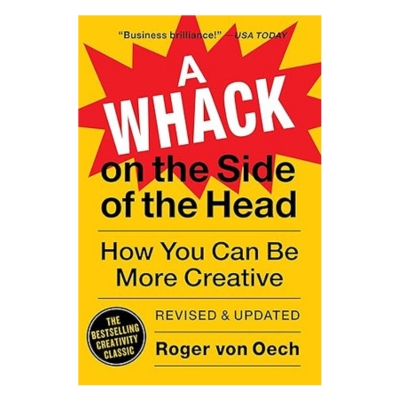
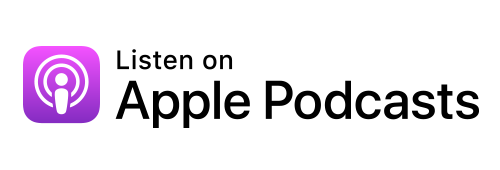

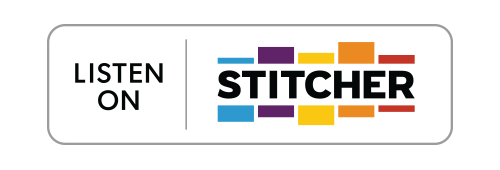





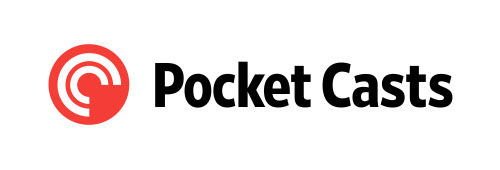
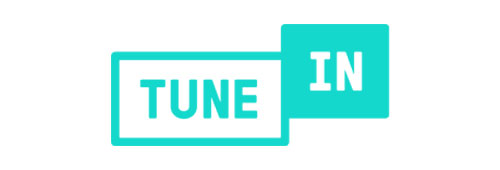
Leave a Reply